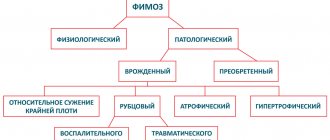More details about the problem
Abdominal pain is one of the most common childhood complaints, and fortunately, it is mostly temporary and harmless. Possible causes are varied and range from infections and food intolerances to functional discomfort.
Among the main provoking factors:
- digestive problems;
- intestinal infection;
- lack of bowel movement for several days;
- too fatty or sweet foods, as well as spoiled foods.
Mental problems, fears and stress also manifest as discomfort. It is usually harmless and will go away when the cause is eliminated. In addition, the body's reaction to excitement, anxiety or joyful excitement can also cause this symptom. Most often, the problem disappears quickly and does not require medical intervention.
Causes of acute abdominal pain
Acute abdominal pain in children can be caused not only by surgical diseases,” begins our “educational program” Igor Petrovich, “very often we see cases where the concern of a child and his parents was caused by abdominal pain that arose at high temperatures during a respiratory viral infection. The fact is that when the temperature rises above 38C, the child quite often experiences inflammation in the lymph nodes, including those located in the abdominal cavity. This is the so-called mesadenitis, and abdominal pain occurs due to the fact that enlarged lymph nodes cause stretching of the peritoneum.
By the way, such pain can be quite intense, and a non-specialist will not be able to accurately exclude the presence of an acute surgical disease. As a rule, children under 3-5 years old complain of abdominal pain during acute respiratory infections - this is due to the age-related characteristics of their lymphatic system and pain receptors that are located in the abdominal cavity.
Also, the cause of acute abdominal pain, when a child needs help not from a surgeon, but from a pediatrician or infectious disease specialist, can be pneumonia, when the inflammatory focus in the lung is located in the lower sections, on the border with the abdominal organs. Separately, it should be said about intestinal infections. It is this group of diseases that has a very similar clinical picture to surgical diseases, and it is precisely patients in infectious diseases departments that are often difficult to diagnose. Therefore, if parents have any doubts, they should also under no circumstances engage in “self-diagnosis” and decide that the child “just ate something” or has a more serious illness!
Most often, the reasons for the development of an “acute abdomen”, when a child needs emergency surgical care, are acute appendicitis, various types of intestinal obstruction, including congenital, trauma to the abdominal organs, gynecological and urological diseases.
Classic pain with appendicitis occurs in the umbilical region or just above (this is called the epigastrium), then goes down to the right iliac region. With intestinal obstruction, the first symptom may be vomiting, and the pain may be cramping, with “light” intervals, abdominal asymmetry, and stool retention. In case of injuries to the abdominal organs, which are the result of children falling from a height, when hitting hard objects, especially with ruptures of the liver and spleen, pain in the abdomen occurs sharply, and then the symptoms of blood loss begin to increase sharply - weakness, pallor, cold sweat, rapid thready pulse . These symptoms absolutely cannot be ignored!
And we should never forget,” Igor Petrovich draws the attention of parents, “that children under a certain age not only cannot clearly indicate a painful place in the abdomen (as a rule, when you ask a child, “Where does it hurt?”, in 99 % he will point to the navel area), but due to their shyness or age-related prejudices, they may not even indicate the true source of pain.
For example, with gynecological diseases in girls, injuries to the genital organs, acute diseases of the scrotal organs in boys, a child may complain of abdominal pain, and only an examination by a specialist can reveal the true cause of such pain. Therefore, parents need to be very attentive to the complaints that their children make, and when asking questions, do it very tactfully. After all, more than 200 boys aged 0 to 14 years are operated on in our hospital for acute urological diseases alone per year, and their future reproductive health depends on the timeliness of assistance provided in these cases.
What causes abdominal pain in a child?
Abdominal pain can also be dangerous - it can act as a signal of a serious illness, such as appendicitis, a urinary tract infection, or an inflammatory process in the pelvic area. It may even indicate incipient pneumonia. The cause may be an increase in body temperature or a flu-like condition. Rare predisposing factors are poisoning, helminthic diseases and intestinal colic.
In infants and young children, the cause is often difficult to determine. Signs include whining or crying, refusing to eat, pulling up the legs, vomiting or diarrhea, and extreme sensitivity to touch. Older children usually describe their feelings well. You can try to help your child with home remedies. If the discomfort does not subside, it is very strong, and if even after a bowel movement the condition does not improve, then the help of a specialist is needed.
Abdominal pain in preschoolers
The most common cause of abdominal pain in preschool children is gastritis, which occurs when the stomach is full or when the child eats rough food. The disease can be triggered by prolonged stress or a viral infection. Gastritis manifests itself as pain in the stomach, that is, in the upper abdomen, which accompanies the symptoms:
- bloating;
- loss of appetite;
- nausea.
Treatment consists of following a diet, taking enzyme preparations and herbal medicine. Of the plants that have the most beneficial effect on the gastric mucosa, we can name plantain in fresh or dried form. In pharmacies there is a freeze-dried extract from plantain called “Plantaglucid”.
Intestinal infections cause the most irritating consequences:
- cramping abdominal pain;
- diarrhea;
- nausea;
- vomiting;
- temperature increase;
- weakness.
The pain is most often localized in the upper abdomen, but in older children pain can be observed in the intestines. This group of infections is treated only with antibacterial drugs prescribed by a doctor.
Appendicitis is such a serious cause of acute abdominal pain that children suspected of having it are immediately hospitalized in the surgical department of the hospital. There are acute and catarrhal appendicitis; both are characterized by dull, aching pain in the right lower lobe of the abdomen. At the very beginning of the development of the disease, the child may feel slight nausea, weakness and a slight rise in temperature. After some time, the pain becomes acute, unbearable, the baby cannot move, the abdominal muscles are tense. All these symptoms serve as an indication for emergency, immediate surgery that does not pose a threat to the child’s health.
Worms are also the culprits of abdominal pain in a child of any age, as they cause intestinal obstruction and inflammation of the appendix. The pain is paroxysmal, there may be diarrhea and vomiting, as well as a deterioration in the baby’s general well-being. Treatment consists of eliminating intestinal obstruction and taking medications that destroy parasites.
Inflammation of the lungs causes acute pain in the abdomen when breathing, and the more often the baby breathes, the more painful it is. Pneumonia can masquerade as acute appendicitis, therefore, if such a pathology is suspected, an x-ray examination must be performed. Treatment for pneumonia is always long-term, in a hospital setting, and the recovery period is quite long.
Acute bronchitis, tracheitis and especially whooping cough, which causes a debilitating cough, can cause abdominal pain the day after the attack when laughing, coughing and any physical stress. This is not dangerous, because the pain is muscle and does not require treatment.
Nature and areas of localization
In infants in the first 3-4 months of life, repeated abdominal pain, which often occurs at the same time of day or night and leads to strong cries, is characteristic of the so-called “three-month colic”. Often, gentle massage or stroking will relieve discomfort. In any case, contact your pediatrician to rule out other causes.
Table - Types and characteristics of abdominal pain in a child
| View | Visceral | Somatic |
| Character | Spastic | Acute, intense, constant, progressive with movement. |
| Localization area | Spilled, unlocalized | Local (within the pathological process) |
| Duration | From a few minutes to several months | Constant |
| Irradiation | Gives to the leg, arm, shoulder blade | Appears only in cases of high intensity and corresponds to the affected organ. |
| Sensations on palpation | In the area of pain localization | In the area of the affected organ |
| Associated symptoms | Tachycardia, excessive sweating, pale skin, vomiting | Typically absent |
In children of early and middle school age, if discomfort appears, you can observe for a while. As a rule, abdominal pain is localized in the navel area, occurs only during the day and is sometimes accompanied by bloating, as well as alternating constipation and diarrhea.
You should contact your pediatrician if your child experiences the following symptoms:
- periodic pain in the same place away from the navel;
- waking up at night due to discomfort in the abdominal area;
- colicky attacks, which are accompanied by sweating;
- discomfort during urination;
- persistent or frequent diarrhea for 4 weeks;
- blood in the stool, repeated vomiting, streaks of blood or bile juice in the vomit;
- noticeable weight loss, lack of weight gain, or stunted growth;
- prolonged increase in temperature.
Possible causes with warning symptoms include intestinal diseases, such as inflammation, celiac disease (gluten intolerance), food allergies, narrowing of the intestine, kidney malformations, kidney or gallstones, inflammation of the pancreas and other rare abdominal diseases.
Many children have no organic cause for their discomfort. Rather, there is a special sensitivity to bowel movements (overexcitation or irritation of the walls).
Bloating
Occurs due to gas formation in the gastrointestinal tract. It can develop in infants because they swallow a lot of air while sucking and drinking. Babies who eat high-fiber foods and eat plenty of vegetables and fruits are more likely to experience this condition.
If a child is prone to flatulence, a lot can be done for prevention and relief:
- purchase the right bottle and special drops that reduce gas formation;
- massage around the navel clockwise;
- provide sufficient time to chew food thoroughly;
- for prevention, give infusion of fennel, anise and caraway tea;
- minimize the amount of gas-causing foods (cabbage or legumes).
Gymnastic exercises - for example, lying on your back with your legs in the air "riding a bicycle" - as well as walking in the air, help improve the condition.
Constipation pain
Characterized by rare passage and hardening of feces. The child constantly complains of discomfort during bowel movements, so he is reluctant to go to the toilet. The situation could become a real problem.
To alleviate the condition, it is recommended:
- move a lot and drink enough;
- Eat a high-fiber diet with plenty of fruits, vegetables and whole grains;
- eat soaked dried fruits, flaxseed, wheat bran and yogurt;
- take warm relaxing baths.
Epigastric pain
Discomfort in the upper abdomen may come from one of the organs located there. These include the stomach, duodenum, liver, gallbladder, spleen (left behind the stomach) and pancreas (center behind the stomach).
The causes in children of middle school and adolescence in 50-70% of cases are:
- Heartburn, reflux disease. A burning, ascending pain behind the sternum, in the upper abdomen and possibly up to the neck, as well as temporary sour belching are the leading symptoms. Most often they occur after a heavy meal. With repeated contact with aggressive stomach acid, the lining of the esophagus can become inflamed (reflux esophagitis).
- Irritation of the gastric mucosa. Discomfort is manifested by convulsive attacks that do not depend on food intake. A feeling of fullness, bloating and loss of appetite are often added.
- Inflammation of the gastric mucosa. Common signs of gastritis include a feeling of fullness, lack of appetite, nausea, vomiting, heartburn, belching and bad breath.
- Stomach ulcer. Severe discomfort in the center or left side, which occurs almost immediately after eating. Over time, the discomfort subsides (often until the next meal).
- Duodenal ulcer (duodenal ulcer). Symptoms appear on an empty stomach and occur suddenly at night or a few hours after eating in the upper middle part. The condition improves after eating.
Due to its anatomical proximity to the chest, discomfort in the upper region can also be a sign of pneumonia. Problems in the spine also sometimes cause discomfort that radiates to the stomach.
Organic (visceral) abdominal pain
Visceral pain occurs directly in organs located in the abdominal area. Painful sensations of organic etiology in a child may be associated with the following diseases:
- gastritis;
- stomach ulcer;
- pancreatitis, cholecystitis;
- colitis, enteritis, enterocolitis;
- liver and gallbladder diseases;
- appendicitis;
- inflammatory processes of the genitourinary system.
In the area where the pathological process is localized, blood circulation is disrupted, stretching or tension occurs, which irritate the nerve endings. The nerve fibers, when irritated, send a signal to the spinal cord, and the child feels pain in the abdomen. With diseases of the gastrointestinal tract, the stomach hurts in the navel area, in the upper and lower abdomen.
Depending on where exactly the pain is localized, the doctor can guess the type and nature of the pathology. For example:
- pain in the upper abdomen may indicate the development of a pathological process in the stomach or lower esophagus;
- pain around the navel occurs due to irritation of the small intestine;
- pain below the navel (lower abdomen) indicates pathological processes in the large intestine.
Dangerous symptoms (acute abdomen)
The concept of “acute abdomen” means that the child experiences severe aching or sharp pain (continuous or frequently recurring pain attacks).
How to determine that a baby has such an acute condition? Signs of an “acute abdomen”:
- the baby complains of severe pain, cries, screams, writhes in pain;
- painful sensations do not go away within 2-4 hours or increase;
- the child’s overall health deteriorates and cold sweats appear;
- the child's consciousness is confused due to pain, he is on the verge of fainting.
In case of the described condition, you should consult a doctor immediately! Acute pain symptoms may indicate such dangerous diseases and conditions as pancreatitis, internal bleeding, intestinal obstruction, cholecystitis, appendicitis, peritonitis, purulent inflammatory processes, perforated ulcer.
Gastritis
Gastritis is an inflammation of the walls of the stomach, accompanied by abdominal pain and disruption of the digestive process. The most common cause of gastritis in children is Helicobacter pylori infection.
Predisposition to the disease is due to factors that affect the acidity of gastric juice and thereby increase the risk of developing infection:
- increased emotional sensitivity;
- strong feelings, stress due to problems in the family, at school;
- allergic reactions;
- eating disorder.
If a child has a stomach ache and vomiting, he probably has gastritis, since with gastritis the liver enlarges, stagnation of bile is observed, and this leads to the manifestation of dyspeptic disorders:
- nausea and vomiting;
- belching;
- constipation, diarrhea.
Intestinal diseases
Inflammatory processes in the small or large intestine manifest themselves in the form of acute abdominal pain and indigestion (diarrhea). Most often, in childhood, colitis and enteritis develop as a consequence of acute infections, after antibiotic therapy, and also as a result of intestinal pathogens entering the body.
Signs of intestinal diseases:
- stomach pain and fever, the pain is paroxysmal in nature;
- diarrhea, constipation or alternating constipation, diarrhea;
- rumbling, bloating.
The child becomes irritable and tearful, he may experience smooth muscle spasms, and vascular dystonia develops. If the disease is not caused by an acute intestinal infection, periods of remission may occur. Then the pain goes away, but intestinal dysfunction remains. In this case, restorative treatment is carried out.
Stomach ulcer
A stomach (duodenal) ulcer is an inflammatory process, during the development of which ulcerations are formed on the mucous membrane of the stomach (duodenum), and has the same causes and predisposition factors as gastritis. With a peptic ulcer, gastric juice is also released into the esophagus (gastroesophageal reflux), which causes heartburn, belching, and pain in the upper abdomen.
Dangerous symptoms:
- increased pain intensity, increased pain attacks;
- sudden weight loss;
- vomiting with the inclusion of normal or dark blood.
Diseases of the biliary system
Diseases of the liver and gall bladder in children, as a rule, have a microbial etiology and develop as a result of:
- dyskinesia of the biliary tract due to compression, blockage of the ducts;
- dysfunction of the sphincter apparatus;
- violations of the contractility of the gallbladder.
Symptoms of diseases of the biliary system:
- pain in the upper abdomen;
- nausea;
- belching;
- unstable (irregular, with changes in consistency) stool;
- constipation;
- liver enlargement.
Appendicitis
Appendicitis in children is a fairly common occurrence. While it is rare in children (under 2 years of age), at older ages, inflammation of the appendix is diagnosed in every sixth child. It is the leading surgical cause of abdominal pain, and appendix removal is among the most common operations in children.
How to differentiate appendicitis in a child? According to these signs:
- loss of appetite;
- general weakness, increased fatigue;
- abdominal pain and temperature (slight increase);
- periodic attacks of nausea.
In addition, with appendicitis, a child experiences pain around the navel, which persists for several hours, after which it concentrates in the lower right abdomen. During an attack of pain, the baby lies down and presses his legs to his stomach. The presence of these symptoms in a child is an indication for immediate hospitalization.
When you need an urgent visit to the doctor
A pale appearance, constant screaming or crying, a curved or retracted stomach usually signals that you need to consult a specialist. Often, when a child has abdominal pain, the body temperature may increase. If the condition does not improve after about an hour or the attack recurs, you should consult a pediatrician or surgeon.
Emergency conditions requiring medical consultation include:
- diarrhea, bloody stools, fever, vomiting, chills;
- severe tension in the abdominal wall;
- prolonged crying and lethargy.
It is unacceptable to take action without making a diagnosis. Pain in the middle of the abdomen in children may indicate an umbilical hernia. In this case, there is a need for surgical intervention.
Non-organic causes of abdominal pain
Pain of inorganic origin in children is pain associated with irritation of the peritoneum, as well as referred pain.
In the first case, the causes of pain may be:
- functional disorders in infants - colic, which occurs suddenly, makes the baby scream in pain and kick his legs, disappears after passing gas or defecation and is usually associated with the fact that the gastrointestinal tract is not yet strong enough;
- intolerance to certain foods;
- mesenteric vasospasm;
- systemic diseases;
- diabetes;
- presence of a tumor.
When the peritoneum is irritated, the child experiences acute localized pain, which intensifies with any movement or coughing.
Referred pain is similar in symptoms to pain that occurs due to irritation of the peritoneum. The main difference between referred pain is that the source (sick organ) is located outside the abdominal area.
For example, a child may have a stomach ache due to diseases such as:
- pneumonia, when the infection affects the lower parts of the lungs;
- cardiovascular diseases.
Severe pain in the lower abdomen in a boy can occur due to a tumor in the groin (pinched inguinal hernia).
In any situation when a child complains of abdominal pain, you must first rule out such dangerous conditions as an acute abdomen (tension, vomiting, increasing pain) and be sure to schedule an examination or consultation with a pediatrician.
What to give a child for stomach pain?
If a child complains of pain in the abdomen, then help is needed. Please note that painkillers “blur” the picture of a serious surgical disease, which is fraught with the development of serious complications. Taking analgesics is possible only if surgical pathology is excluded.
If the reason is known, then act within the developed scenario:
- if the walls of the stomach or esophagus are irritated, give antacids (“Almagel”, “Maalox”);
- for food intoxication - sorbents;
- to reduce high temperatures - a drug based on paracetamol or Nurofen (if surgical pathology is excluded).
In conditions such as intestinal obstruction and acute pancreatitis, emergency medical attention is required. You need to call an ambulance if a child has appendicitis, which is accompanied by a sharp, cramping pain in the lower abdomen on the right, radiating to the right leg. In this case, medications are contraindicated because they interfere with emergency surgery, which is necessary in this case.
First aid for abdominal pain
Parents who experience abdominal pain in a child, especially if it is acute and aggravated by other warning symptoms, should first call an ambulance. The child needs to be put to bed and not given any painkillers until the doctor arrives, as this can smooth out or distort the picture of the disease. Self-treatment of acute pain with antibiotics is unacceptable, since the cause of the disease may be completely different.
The importance of seeing a doctor in the first hours of pain is that if the situation requires emergency surgical intervention, for example, with a strangulated hernia or acute appendicitis, then delay will lead to tragic consequences for the health, and perhaps the life of the child. Newborns and adolescents are especially dangerous in this regard. The clinical picture of the disease in infants often suffers from the absence of reliable symptoms or their smoothness, and adolescents tend to hush up the manifestations of pain, fearing medical intervention and the collapse of their plans.
If you consult a doctor in a timely manner, the prognosis even for serious diseases accompanied by abdominal pain is favorable.
If abdominal pain has just appeared
As with any illness of a child, the most important thing for parents is to remain calm and not to harm the child through their action or inaction,” Igor Ogarkov continues our conversation, “if abdominal pain has just appeared, then you should not call an ambulance right away help.
To alleviate his condition, a child can be given an age-specific dosage of no-shpa (preschoolers - ¼ tablet, 7-14 years old - ½, older children can be given a whole tablet) and enzymes (Creon, Mezim-Forte, Pancreatin). The exception here is still analgesics - they should not be given, because against their background the doctor, when examining the child, can see a distorted clinical picture of the disease. If after taking no-shpa the pain goes away without a trace within 30-60 minutes, then the child will need to be shown to a gastroenterologist in the coming days, and together with him the cause of the pain will be determined and treatment will be carried out. If after an hour or two or three the abdominal pain does not disappear, then, depending on the time of day, parents need to either contact a surgeon at the clinic at their place of residence, or call an ambulance. Particular attention should be paid when, along with abdominal pain, your child’s body temperature begins to rise and vomiting appears - consultation with a specialist is mandatory here!
Taking this opportunity, I want to appeal to the fathers and mothers who, bypassing the ambulance or the clinic surgeon, come with their children to the emergency department of the 9th hospital on their own,” says Igor Petrovich, “there is no need to expose your child, who is already at this moment is experiencing stress due to the pain he has developed, such a long trip, which can often be useless. Judge for yourself - during the day, from 120 to 140 patients come to the emergency room of Children's City Clinical Hospital No. 9. Including about 50 by ambulance, and the vast majority of them really need our help and remain in the hospital. Two or three dozen children a day are referred to us by clinics, and the vast majority - 60-70 people - come on their own. However, only a few of them require hospital treatment, and the majority go home after being examined by a doctor. At the same time, the child spends quite a lot of time in an unfamiliar environment of the emergency room, undergoing tests, and because of this uncontrolled flow, children who are brought by an ambulance have to wait.
nurse's post










